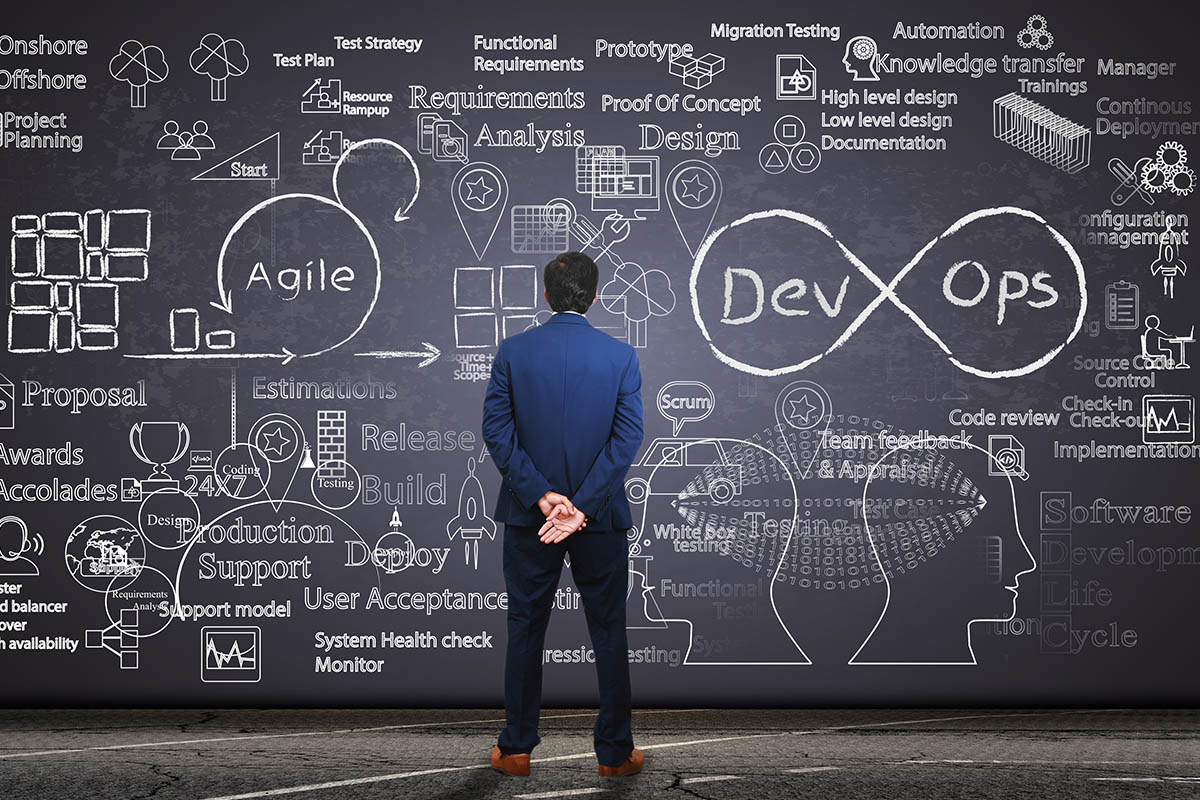In a world, where working from home becomes a requirement, where there is no well-established work schedule, and where there is a constant need for development, it is up to the employees to decide the use of their time. Without deliberate thinking, employees sometimes are being laser-focused on working and thus, neglecting their needs to learn and develop themselves. This degrading behavior can be avoided if they have sufficient metacognitive knowledge and action.
 In lifelong learning, as futurist and philosopher Alvin Toffler pointed out, one must be able to learn new things, unlearn the obsolete knowledge, and relearn the updated version of it. Solely focusing on practicing won’t help one in dealing with the two latter parts of it.
In lifelong learning, as futurist and philosopher Alvin Toffler pointed out, one must be able to learn new things, unlearn the obsolete knowledge, and relearn the updated version of it. Solely focusing on practicing won’t help one in dealing with the two latter parts of it.
On the contrary, to those ill-equipped ones, unlearning and relearning can become a challenge. They may not have enough courage to cut the obsolete branch from their knowledge tree or may not even know which branch that they should cut; this can result in stagnancy and it will not be beneficial to both the employees and the corporations. Hence, to overcome those difficult situations, metacognition must be introduced and developed.
Metacognition and the Importance of It
The term metacognition consists of ‘meta’ and ‘cognition’. Combined, they are translated into ‘beyond thinking’. The term itself was first coined in 1976 by John Flavell, an American developmental psychologist. He defines it as being mindful of one’s own cognitive processes and having the ability to use that knowledge to purposefully regulate those cognitive processes. This combination of having that knowledge and ability to control it forms a cycle consisting of planning, monitoring, and evaluating [5].
While planning, monitoring, and evaluating seem to be straightforward and naturally happening when people are doing their work, most people tend to lean on the notion of routine. As they are working on the same thing repeatedly, it slowly becomes their routine. This, on one hand, can increase their speed in finishing their task as they are getting comfortable with their task.
On the other hand, when they are not careful, they can be stuck in monotony and neglect the aforementioned cycle. When the task slowly becomes monotonous, it will not be rewarding anymore. Even worse, the people stuck in the monotony will stop developing their skills and may even degrade their own skills. Therefore, to avoid degrading one’s skills, metacognition must be given a deliberation in one’s life. By attending to one’s metacognition, one’s understanding and action during learning can be regularly monitored and controlled [7].
It is important to understand that metacognition is not the same as cognition.
Cognition is about the performance itself. For example, when someone is doing accounting, he will think about the numbers. What should be categorized as income and expense? Is the expense logical? Is the final balance correct? These are all one’s mental brainwork in solving the task (i.e. cognitive knowledge).
Upon finishing the task, that person will immediately think about the approach he has employed to finish the task. Unfortunately, an error results in an incorrect balance sheet. To ensure that it will not happen again in the future, the person then decides that he will regularly check the income-expense number.
This thought process is metacognition [3,5].
That being said, metacognition is also closely related to people’s ability to improvise, adapt, and overcome[6]. As people put a deliberate effort into thinking about their own thinking process, they will start to understand themselves better. Instead of being laser-focused solely on their desired result, metacognitive people will also think about their process in achieving that result. Looking into their own process, they may find what works best, what can be better, a more appropriate strategy, flaws, and opportunities to develop themselves.
Then, they can finally know which branch should be fostered and which is obsolete and should be cut; this is the significance of metacognitive knowledge.
Essentially, metacognition is thinking about thinking. Metacognitive knowledge enables people to purposefully monitor their performance and adapt [5,6]. Having metacognition means that they are in control of their own cognitive processes [4]. They can understand more about what they really know and do not know, they can learn and relearn more effectively; more importantly, they can unlearn obsolete or no longer relevant knowledge [1,7].
This is crucial for people in adapting to the situation where constant development is needed, specifically in the corporate world. While it is possible to hire people with the required updated skill, it will be costly for the corporations. Instead, they can train their employees for that necessary skill.
Thus, having employees who have strong metacognition and, therefore, can effectively learn, will be a huge benefit for the corporations.
Metacognition and How to Train It
As the importance of metacognition for employees has been elucidated, the question now changes into how can the training of it be incorporated into L&D? There are many strategies that can be used to facilitate the development of metacognition for employees as learners.
Yet, before going into the strategies, one of the most fundamental constructs needed to be first acknowledged by both the learners and the facilitators is that metacognition exists. This is already half the battle as without acknowledging the existence of metacognition in themselves, learners cannot develop it due to it being unknown to them.
Therefore, the first step that should be done is that facilitators must first be trained to understand fully what metacognition is, before ensuring that their learners also acknowledge the existence of metacognition. For this, the facilitators can direct learners to the necessary literature, like this article and the references in it for example.
Another strategy that can be used by the facilitators is to give role model. They can show their own metacognitive processes and the practical implication of having those processes (e.g. developing understanding, choosing a more effective strategy for a task, unlearning obsolete knowledge). This first step is the most essential step that will make or break the learners’ metacognitive development [5].
After the learners have acknowledged the importance of it, the facilitators can start training them with the cycle: planning, monitoring, and evaluating. One of the examples is the learners can be given a specific task then they are asked to jot down what they are planning, how they feel during the task, and how do they see the end result: what is already good and what can be better[5]. By reflecting their planning, monitoring, and evaluation phases, they will become more aware about how their thinking processes work. After that, the facilitators can discuss together with the learners and figure out what can be improved in either of those three phases.
As the facilitators are asking the learners to reflect on their metacognitive cycle, the facilitators must also give routine feedback for the learners’ reflection. It is to stimulate learners’ metacognition [1]. This is especially important in an online L&D situation [2] where it is up to the learners in deciding the use of their time. By making the learners aware of it, they can improve their own learning processes with the help of facilitators’ feedback.
As a summary, the practical steps are:
- Acknowledging the importance of metacognition,
- Training the learners’ metacognition by giving them deliberate practices,
- Asking the learners to reflect on their cycle of metacognition,
- Giving the learners routine feedback on their cycle of metacognition.
In the end, the learners must be invited to deliberately reflect on their own thinking processes. With deliberate practice and adequate amount of guidance and assistance [4], it won’t be long for learners to start exponentially developing their own metacognition.
And finally, when thinking about thinking is done daily, employees’ L&D and working habits will be more effective and efficient. They can finally figure out by themselves which branch from their tree of knowledge should be fostered and which, that is obsolete, should be trimmed down. They can finally become lifelong learners who can learn, unlearn, and relearn independently.
References
[1] Callender, A. A., Franco-Watkins, A. M., & Roberts, A. S. (2016). Improving metacognition in the classroom through instruction, training, and feedback. Metacognition and learning, 11(2), 215-235.
[2] Elbasri, H., Haddi, A., & Allali, H. (2018). Improving e-learning by integrating a metacognitive agent. International Journal of Electrical & Computer Engineering, (2088-8708)
[3] Kleitman, S., & Narciss, S. (2019). Introduction to the special Issue “applied metacognition: real-world applications beyond learning”. Metacognition and Learning, 14(3), 335-342.
[4] Kurt, M., & Kurt, S. (2017). Improving design understandings and skills through enhanced metacognition: Reflective design journals. International Journal of Art & Design Education, 36(2), 226-238.
[5] Mbato, C. L. (2013). Facilitating EFL learners’ self-regulation in reading: Implementing a metacognitive approach in an Indonesian higher education context. Southern Cross University, Lismore.
[6] Medina, M. S., Castleberry, A. N., & Persky, A. M. (2017). Strategies for improving learner metacognition in health professional education. American Journal of Pharmaceutical Education, 81(4).
[7] Özsoy, G., Memiş, A., & Temur, T. (2017). Metacognition, study habits and attitudes. International Electronic Journal of Elementary Education, 2(1), 154-166.





